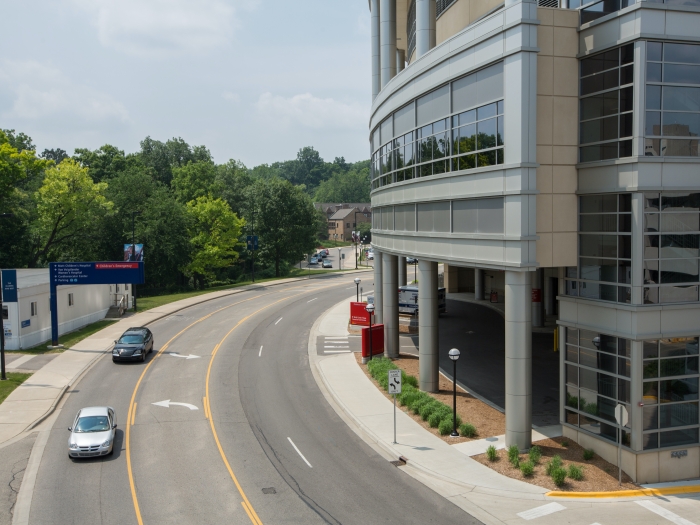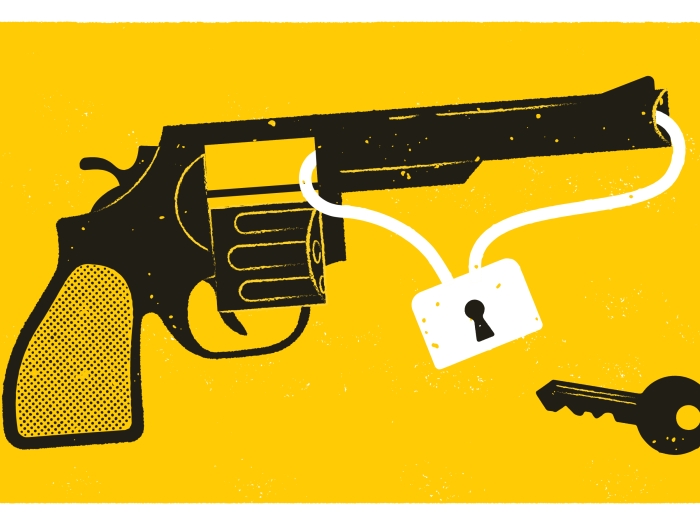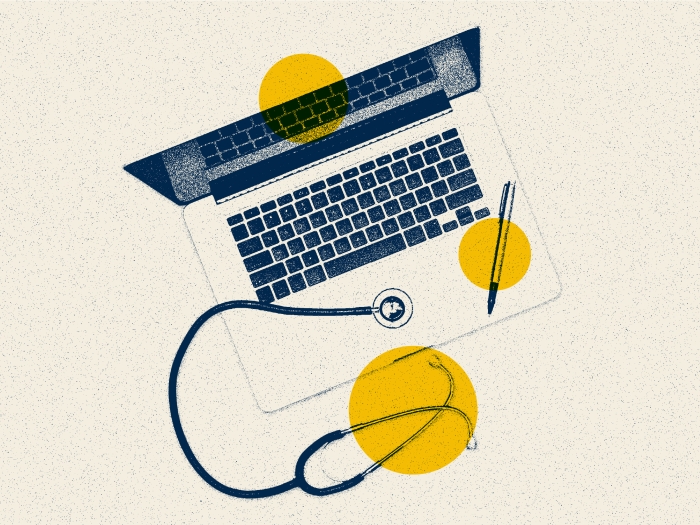A seemingly normal errand run turned abnormal for one man when his heart stopped beating. How a Michigan Medicine surgical resident happened upon the man’s emergency and helped save his life.
12:10 PM
Author |
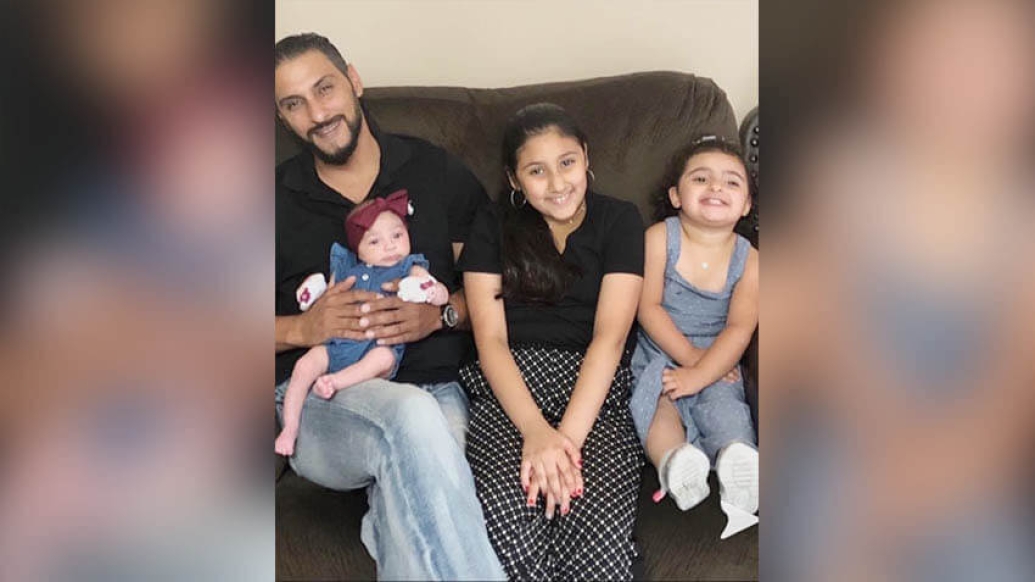
October 16, 2019 seemed like a normal day for Wafi Thabateh when he decided to pick up dinner for his family from a restaurant in downtown Ann Arbor.
"The last thing I remember is I was driving and then I woke up in a hospital room," Thabateh says.
Thabateh, 38-years-old at the time, had rear-ended a vehicle in front of him as he experienced a widowmaker heart attack, which involves 100 percent blockage in the left anterior descending artery. The blockage cuts off blood flow to the heart, causing it to stop beating.
"Luckily Dr. Yost saw what happened and saved him," says Zaynah Issa, Thabateh's wife.
Ready to help
Gardner Yost, M.D., a resident physician in thoracic surgery at Michigan Medicine, had just left the hospital after finishing his shift for the day.
"I saw a car rear-end a parked car," Yost says. "The accident was at a low speed, but when I pulled alongside the vehicle I saw that the driver was slumped over, apparently unconscious, and clearly in greater trouble than I had originally expected."
Yost opened the driver's side door of Thabateh's vehicle and checked for his pulse. After feeling a faint pulse, he took Thabateh's foot off the gas petal and asked another bystander to call 911. When he went back to check Thabateh's pulse again, it was gone.
LISTEN UP: Add the new Michigan Medicine News Break to your Alexa-enabled device, or subscribe to our daily updates on iTunes, Google Play and Stitcher.
Yost pulled him out of the vehicle and began performing cardiopulmonary resuscitation, or CPR.
Hands-only CPR only requires two steps to help save a life and can be performed by anyone. If a bystander suspects someone has gone into cardiac arrest, they should first call 911 and then interlace their hands and perform hard and fast chest compressions.
Performing hands-only CPR was first instinct for Yost.
"A reality of training in surgical residency is caring for patients with cardiac arrest," he says. "But, in the hospital we are surrounded by staff who are prepared to help, special equipment and medications, and are able to rapidly escalate care as needed."
Yost notes that bystanders don't have to be trained medical professionals to help perform CPR.
"In the instance of Wafi's cardiac arrest, I had the great fortune to be immediately helped by several other bystanders who called emergency services, helped me move him to the side of the road and start a timer for compressions while I performed the compressions," he says. "Without those folks who recognized the severity of the situation, I don't think we would have been able to start CPR as quickly."
After about five minutes of continuous chest compressions, Yost still wasn't getting a pulse when first responders from the Ann Arbor Fire and Police Departments arrived on the scene. Three of the first personnel on the scene were police officers Steven Dye and Thomas Burnette, and fire acting lieutenant Christopher Nielsen.
"When Officer Burnette and I arrived at the crash I could see Dr. Yost performing chest compressions on Mr. Thabateh," Dye says. "I immediately grabbed my automated external defibrillator (AED) machine and ran over. I have connected my AED to people on some previous occasions, however, this was the first time that it actually advised to deliver a shock."
"Police Officer Dye happens to be one of just a few officers who carries an AED machine," Issa says. "It's an incredibly small world because he also happens to be one of my co-workers' brother."
Thabateh was shocked twice before the first responders could feel his pulse.
"Once the first shock was delivered Dr. Yost continued chest compressions while Officer Burnette did rescue breathing," Dye says. "After the second shock was delivered and the compressions and breathing were resumed, the fire department arrived along with an ambulance crew."
Thabateh was then rushed to Michigan Medicine.
A short hospital stay
Issa arrived at the Michigan Medicine emergency department anxious and worried.
"Everyone was wonderful," she says. "A social worker was there to greet me and explain what happened, the physicians walked through everything with me and explained that he was going in for surgery."
Attending emergency medicine physician Mark Lowell, M.D., also contacted the Ann Arbor Police Department.
MORE FROM MICHIGAN: Sign up for our weekly newsletter
"Later in my shift I was contacted by a supervisor and asked to take my AED to the emergency department so the doctors could analyze it," Dye says. "I was later told that the shocks from the AED reset the electrical problems caused by his ongoing heart attack. I was happy to be a part of the team that helped save Mr. Thabateh's life."
Peter Farrehi, M.D., a cardiologist at the Michigan Medicine Frankel Cardiovascular Center, was Thabateh's attending physician after the cardiac surgery to fix the blockage in his heart.
"Dr. Farrehi told us that in all of his years in medicine, he had never seen somebody whose heart had stopped for so long that didn't have complications," Thabateh says. "But I didn't, and I was able to leave the hospital four days after the accident and heart attack."
Not before Thabateh's first responder paid him a visit.
"Dr. Yost came and visited me in my hospital room, and we still text each other to this day," he says.
A new normal
Thabateh still has routine appointments with his cardiology team, including cardiologist Devraj Sukul, M.D., to ensure his heart is working properly.
"There's no 'back to normal'," Thabateh says. "I'm now on six different medications and really have to watch my eating habits."
Thabateh says he had just quit smoking about six months before the heart attack, and at this time, he doesn't appear to need any sort of follow-up surgery on his heart. He does frequently have bloodwork testing to ensure his kidneys and liver are functioning properly while on the medications.
Thabateh was also going to cardiac rehabilitation, but when the COVID-19 pandemic began, he started working out at home. His three daughters, a 10-year-old, a 3-year-old and a 1-year-old, keep him plenty busy.
"We've been quarantining at home so I like to play outside with them," he says.
"There are some days where he feels short of breath while playing with the girls," Issa says. "But he tries to play with them and work through it. We also want him to be at home because with his immune system he could catch the COVID-19 virus easily."
Thabateh plans to keep up his appointments with his cardiology team to ensure he's doing well in what his family calls his "new normal."
"It's just all phenomenal to this day," Issa says. "The help he received at the scene, his care team — we really couldn't have had a better experience."
Bystander award
Yost is so happy to know that Thabateh is doing well and enjoying time with his family.
"It has been just incredible to see how well Wafi is doing," Yost says. "I was just in the right place at the right time and did what any physician would have done, but nonetheless, am truly grateful to have had the opportunity to help and get to know him. It's been one of the most rewarding parts of my residency thus far."
In late June 2020, Yost was awarded the Civilian Life Saving Award from the Ann Arbor Fire Department.
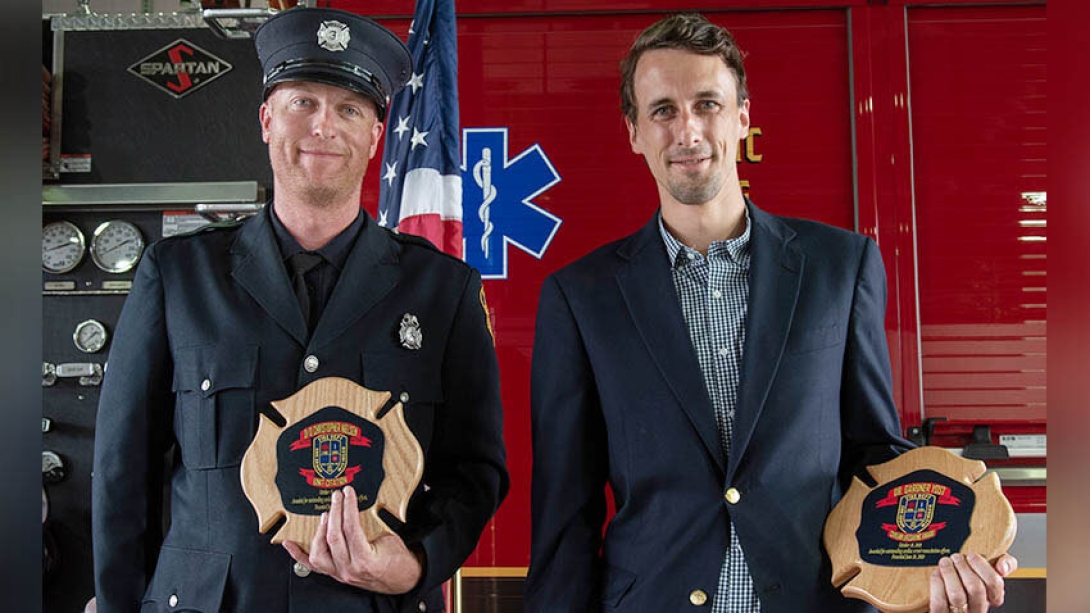
"It was an absolute honor to receive the award from AAFD," Yost says. "I truly appreciate the efforts of the department, as well as the University of Michigan, to promote awareness of bystander CPR."
He adds that being a doctor didn't give him a leg up on being able to help Thabateh.
"Anyone can learn the basics of CPR and help others in need," Yost says. "So much of what makes being a doctor an amazing job is that we get to help people every day, which is something anyone can do with the knowledge of how to perform CPR."
Learn more about SaveMiHeart, a non-profit organization in Michigan uniting the community, first responders, EMS systems and health systems to improve cardiac arrest survival.

Explore a variety of healthcare news & stories by visiting the Health Lab home page for more articles.

Department of Communication at Michigan Medicine
Want top health & research news weekly? Sign up for Health Lab’s newsletters today!


